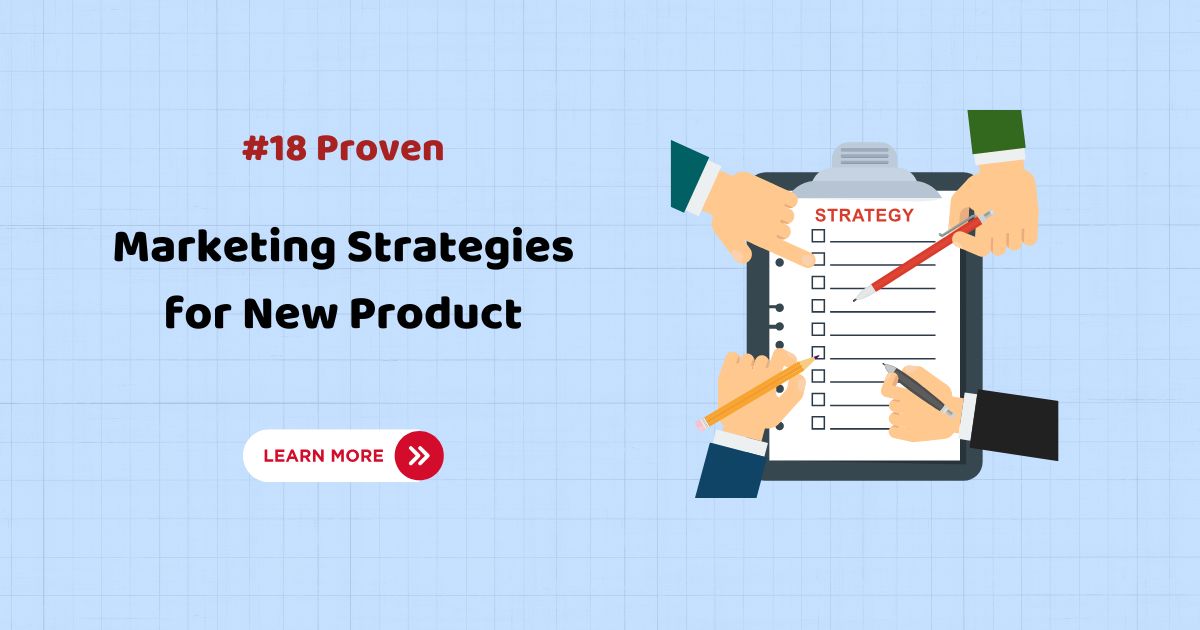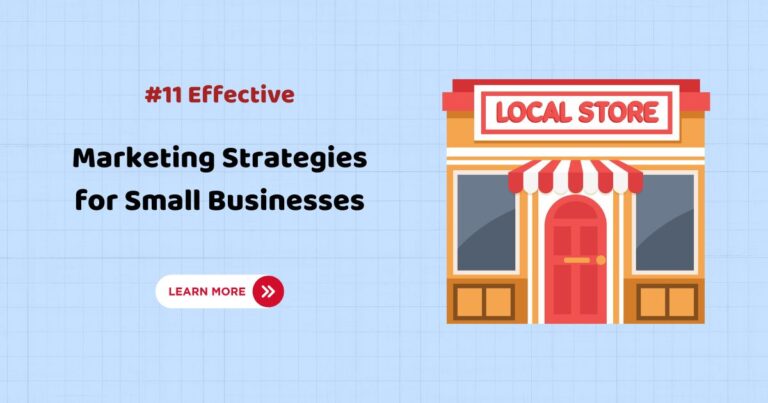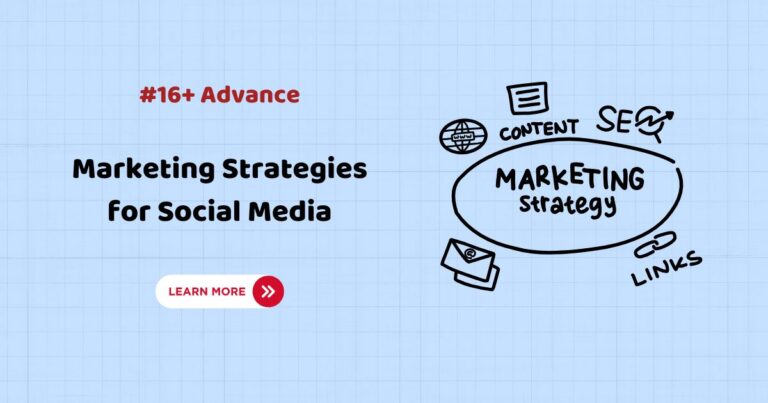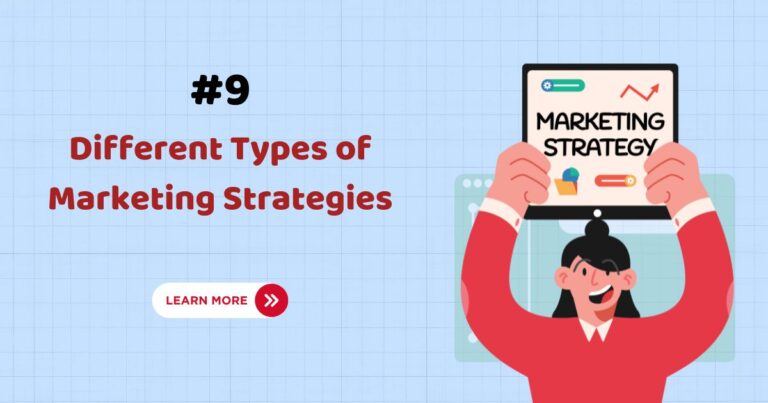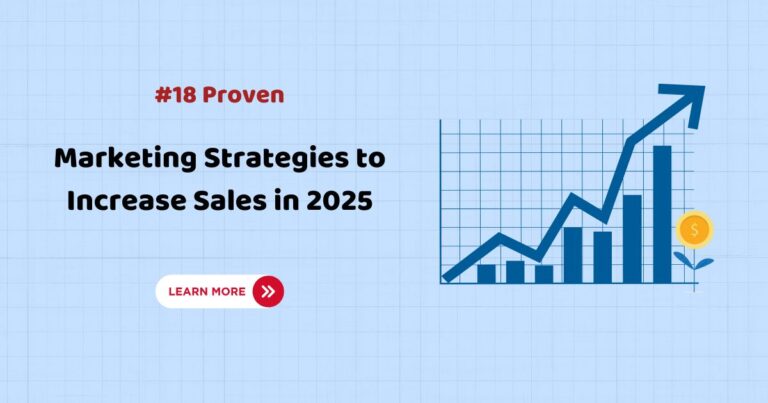Marketing Strategies for New Products in 2025
Launching a new product is always exciting and challenging. To ensure success, it is important to implement effective marketing strategies that resonate with your target audience and position your product strongly in the market. In this article, we will explore actionable steps and proven marketing strategies for new products, to help you introduce your new product and maximize its potential.
Why Marketing Strategies Matter for New Products
Marketing strategies for new products are essential to creating awareness, driving sales, and establishing a competitive edge. A well-thought-out marketing strategy ensures your product reaches the right audience, meets their needs, and achieves your business goals. Without a solid plan, even the best products can fail to make an impact.
18 Major Marketing Strategies for New Products
- Define Your Target Audience
Understanding who your product is for is the first step to success. Based on demographics, preferences, and behavior, identify your ideal customers. Use tools like surveys and customer data to create detailed buyer personas.
- Conduct Market Research
Research your industry, competitors, and market trends. Understand what your audience values and identify gaps that your product can fill. Competitive analysis will also provide insights into what works and what doesn’t in your niche.
- Set Clear Goals
Define specific, measurable, achievable, relevant, and time-bound (SMART) goals for your product launch. Goals include increasing brand awareness, acquiring a set number of new customers, or achieving a specific revenue target within the first quarter.
- Leverage Social Media
Social media platforms like Instagram, TikTok, and LinkedIn are powerful tools for promoting new products. Create engaging posts, host live events, and collaborate with influencers to expand your reach.
- Embrace AI Marketing
Utilize artificial intelligence (AI) tools for personalized marketing. AI can help analyze consumer behavior, optimize ad targeting, and create tailored content that resonates with your audience.
- Use Email Marketing
Build an email list and send personalized messages to your audience. Announce your product launch, offer exclusive deals, and provide valuable content to keep your subscribers engaged.
- Partner with Influencers
Collaborate with influencers who align with your brand. Their endorsement can build trust and credibility, helping you reach a wider audience.
- Develop a Content Creation Strategy
Content marketing is key to educating your audience and showcasing the value of your product. Create blog posts, videos, and infographics that address common questions and pain points related to your product.
- Plan Introductory Deals
Offer limited-time discounts, free trials, or bundles to attract early adopters. These deals can incentivize purchases and generate buzz around your product.
- Invest in Video Marketing
Videos are engaging and versatile. Create product demos, customer testimonials, or behind-the-scenes footage to connect with your audience. Share these videos across platforms like YouTube and social media.
- Focus on SEO (Search Engine Optimization)
Optimize your website and content for relevant keywords like “marketing strategies for new product launch” and “best marketing strategies for new products.” This will improve your search engine ranking and drive organic traffic to your site.
- Utilize Blogging
Write informative and engaging blog posts about your product’s features, benefits, and unique selling points (USPs). Blogging helps establish authority in your industry and improves your SEO efforts.
- Position Your Product Strategically
Highlight what makes your product unique. Your unique selling proposition (USP) should answer the question: “Why should customers choose this product over others?”
- Map the Customer Journey
Understand and optimize the customer journey—from awareness to purchase. Address potential barriers and provide a seamless experience to encourage conversions.
- Create a Marketing Budget
Allocate your resources wisely. Decide how much to spend on advertising, influencer partnerships, and other marketing activities. Monitor expenses to ensure you stay within budget.
- Launch Referral Programs
Encourage satisfied customers to refer your product to others. Offer incentives like discounts or freebies for every successful referral.
- Collaborate Across Teams
Align your marketing, sales, and customer support teams to ensure consistency in messaging and goals. Cross-functional collaboration strengthens your overall strategy.
- Iterative Optimization
Continuously monitor your strategy’s performance and make data-driven adjustments. Use tools like Google Analytics and A/B testing to refine your approach.
Example Marketing Strategy for a New Product Launch
Imagine you’re launching a health drink. Here’s a simple strategy:
- Target Audience: Health-conscious individuals aged 18-35.
- Social Media: Post recipe ideas using the drink on Instagram.
- Introductory Deals: Offer a “Buy One, Get One Free” promotion for the first month.
- Influencer Marketing: Partner with fitness influencers to showcase the product’s benefits.
- SEO: Optimize your website with keywords like “health drink for energy.”
- Content Creation: Share blog posts about the drink’s nutritional value and benefits.
Case Study: Dollar Shave Club
When Dollar Shave Club launched, they focused on:
- A Clear USP: Affordable, high-quality razors delivered to your door.
- Viral Video Marketing: Their humorous launch video attracted millions of views.
- Targeted Ads: Reaching their audience on platforms like Facebook and YouTube.
As a result, they quickly gained a loyal customer base and became a household name.
Conclusion
Marketing strategies for a new product require a mix of creativity, data-driven decisions, and customer-centric approaches. By defining your audience, leveraging digital tools, and continuously optimizing your efforts, you can set your product up for success. Remember, the key is to stay adaptable and focused on delivering value to your customers.

